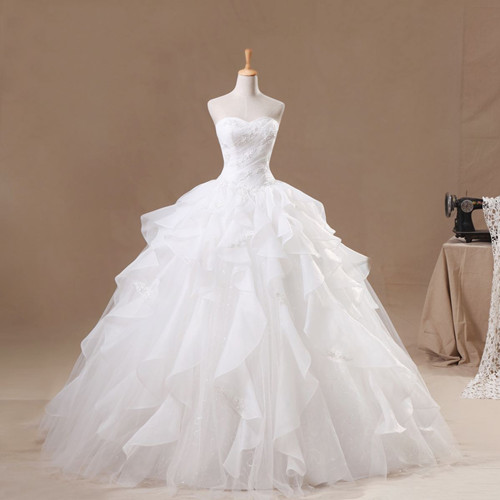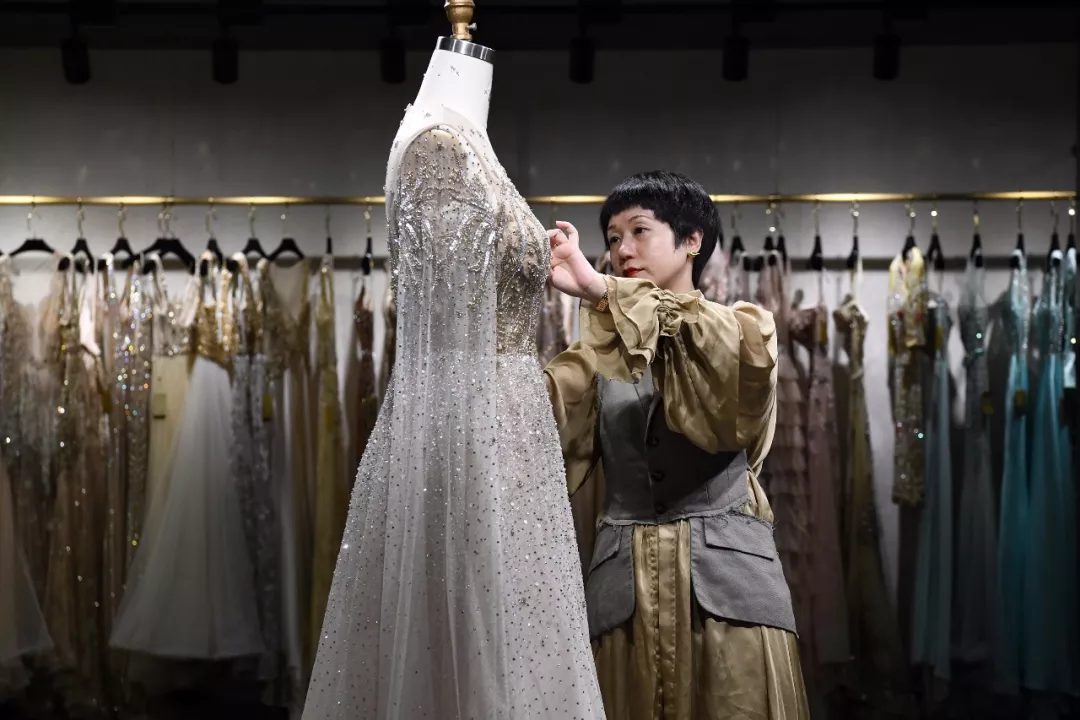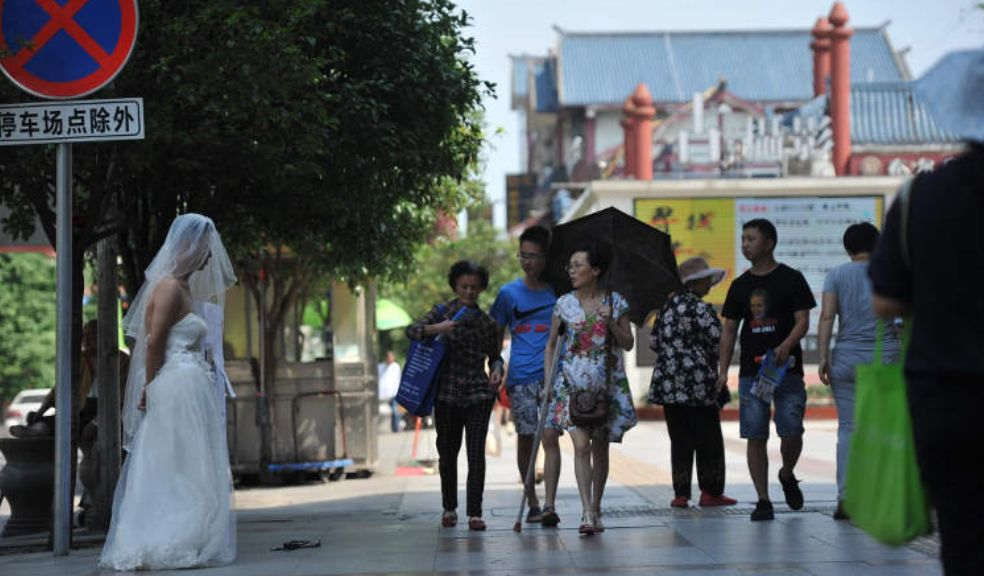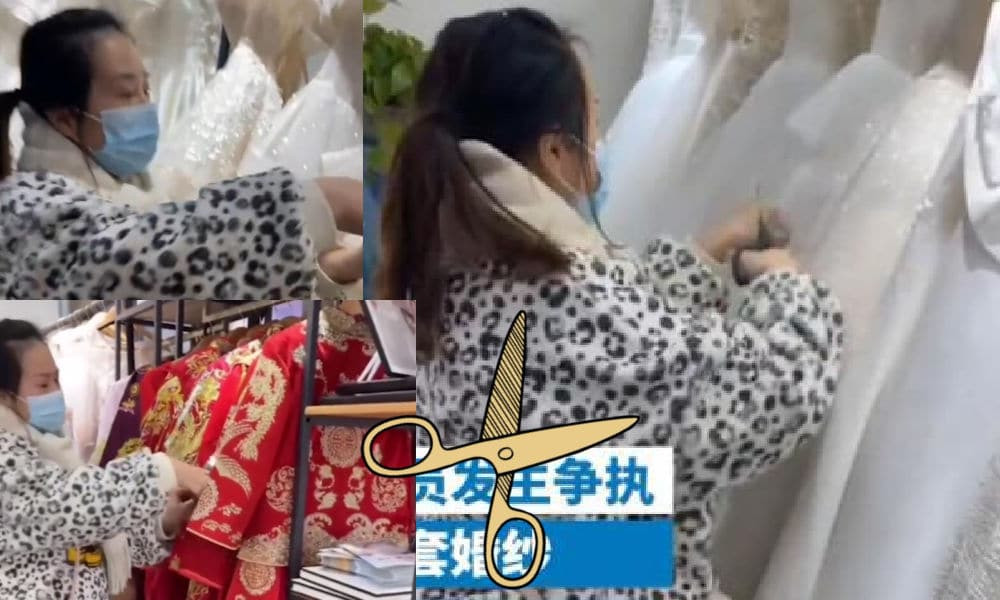It’s the default setting for brides in Western culture, but what does the ubiquitous white wedding dress actually represent? Not quite what we have always assumed, it turns out. The tradition of brides wearing white has never symbolised virginity or purity, according to a new exhibition that explores the garment’s history – the white bridal gown’s primary function was ostentatiousness.
“The connotation of purity was not important,” Edwina Ehrman, curator at London’s Victoria & Albert Museum, tells BBC Culture. “It was about wealth. Throughout the 18th and 19th Century, women who could afford it got married in white.” In the days when washing was done painstakingly by hand with a washboard, a white dress was almost impossible to clean thoroughly. “It was a garment you just wore once, so it was only for the very wealthy.” Ehrman has studied how wedding dresses have changed in tune with fashion and society over the centuries – and also upends some of our long-held assumptions along the way.
The white (or ivory) wedding dress – popularised by Queen Victoria, who wore one at her wedding to Prince Albert in 1840 – has certainly endured. There’s no denying its totemic power. For many brides it encapsulates a hopeful, romantic nostalgia, and many designers. “It can have a transformative effect,” says Ehrman. “And if you’ve already been living with your partner or even if you’ve had children you may want to wear white at your wedding because you feel it marks a new phase in your relationship.”
White is the warmest colour
So quintessentially bridal has the white dress become that now when a bride chooses to tie the knot wearing another colour, it’s considered daring and rebellious: think burlesque dancer Dita Von Teese in her purple, corsetted dress by Vivienne Westwood, for instance; singer Gwen Stefani in a dramatic dip-dyed number by John Galliano; or actresses Anne Hathaway, Jessica Biel and Reese Witherspoon all of whom recently wed in unconventional pink. And when designers Oscar de la Renta and Vera Wang recently debuted non-white wedding-dress collections, it was viewed as a radical move in the conservative bridal-wear industry.
Yet getting married in pink, purple, yellow, red (the typical bridal gown colour in China) or any other colour for that matter is nothing new in Western culture, nor particularly irreverent, says Ehrman. “Over the centuries, brides who were interested in fashion have often got married in different colours. And they would wear them many times afterwards, altering them over the years to fit in with fashion, or to fit a changing figure.” And it was common for women not to buy a new dress for the occasion, but to simply get married in their best existing outfit.
Bridal fashion adapted to wartime as best it could. “People did what they could during World War II,” explains Ehrman. “They would borrow a dress or wear their service uniform. Women in the armed forces could also hire a dress, and some brides made dresses out of curtain fabric. We have an example in the show of a buttercup-print dress made of lightweight upholstery fabric.”
Post-war, the mid-calf ballerina-length design became popular, favoured by women who had careers. There were some spectacular one-off gowns, too. Margaret Whigam, one of the first It girls, wore a big, showy gown by Norman Hartnell. “She was beautiful, rich and she loved the camera – she was the perfect client for Hartnell,” says Ehrman. “That was not a garment that could be altered for another occasion.”
In the swinging 1960s, singer Lulu sported a white hooded, fur-trimmed maxi coat over a mini dress and high boots. The Thea Porter-designed empire-line dress displayed in a previous V&A wedding-dress exhibition – “demure but flirty” as Ehrman puts it – in devore velvet, is quintessentially 1970s. “The reason the white wedding dress has survived is because it can evolve and remain fashionable –it persists because it can be reinvented.”
Designer Jenny Packham agrees. “The most memorable wedding outfits for me are those that define an era from a fashion perspective,” she says. “Bianca Jagger in that white suit, Audrey Hepburn in a mini dress and head scarf.” Packham designs bridal wear as well as eveningwear (and is a favourite with many high-profile women, including the Duchess of Cambridge).
So what era influences Packham’s bridal wear the most? “The 1930s are always a great source of inspiration – a wonderfully decadent and glamorous era between the wars, it was a design explosion of divine proportions.”
And how does she predict the wedding dress will evolve? “The bridal dress must stand out as a piece of clothing… At the moment there is a comfortable stand-off between the red carpet and the aisle. Neither wants to look like the other.”
Alice Temperley is influenced by the silhouettes and spirit of the 1920s. Why has the romantic, ultra-feminine gown endured for so long in her view? “The wedding dress is traditional, timeless and defies trends,” she says, recalling her own wedding dress, made with “antique lace and 1920s sequins that I had collected since childhood”.

Making a statement
It’s all in the detail, agrees Gareth Pugh, who has created stage outfits for the likes of Lady Gaga and Kylie Minogue – and whose dramatic-but-romantic bridal dress for stylist Katie Shillingford is part of the V&A collection. “A costume for the stage and a wedding dress both have very specific roles to fulfil,” Pugh tells BBC Culture. “However, the approach and process are very different. Usually with stage costume, comfort and the ability to move around easily are top of the list, along with being visually striking.
“With a wedding dress there are layers of subtlety that you can achieve that you just can’t replicate on stage – usually because a wedding dress is viewed in much closer quarters. And a bride is more willing to forego comfort.” And how does Pugh think the wedding dress will evolve in the future? “I think the idea of dressing up and presenting a side of oneself that is a fantasy will always appeal,” he says. “For most, a wedding is perhaps the one day where they are allowed free rein to really go to town. There will always be a niche market for the traditional white meringue, but I like the idea of the dress being a little more personal – something that is made with love and care, something that takes time and patience – a lot like the marriage itself.”
And like marriage itself, wedding attire continues to evolve. As Edwina Ehrman puts it, “Gay weddings and cross-cultural weddings are both examples of how new traditions are being established.” All of which feeds into the multi-billion-dollar global wedding-attire industry. “There is definitely a spirit of competitiveness around weddings now – the bridezilla or groomzilla phenomenon is real,” says Ehrman. And the alternative-wedding bridezilla who wishes to make a conscious statement through her wedding can be just as competitive – in fact, some are ditching the white wedding dress to make a point about gender politics.
That’s nonsensical, says Ehrman. “If you want to wear a coloured dress on your wedding day, or trousers, or go barefoot, go ahead. But the idea that wearing a white wedding dress is going to somehow enslave you is absurd – equality and respect are what matter in a marriage, not what you wear at your wedding. When it comes to modern bridal wear we are just incredibly lucky to have such a diversity of choice.”


